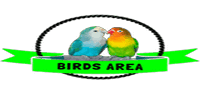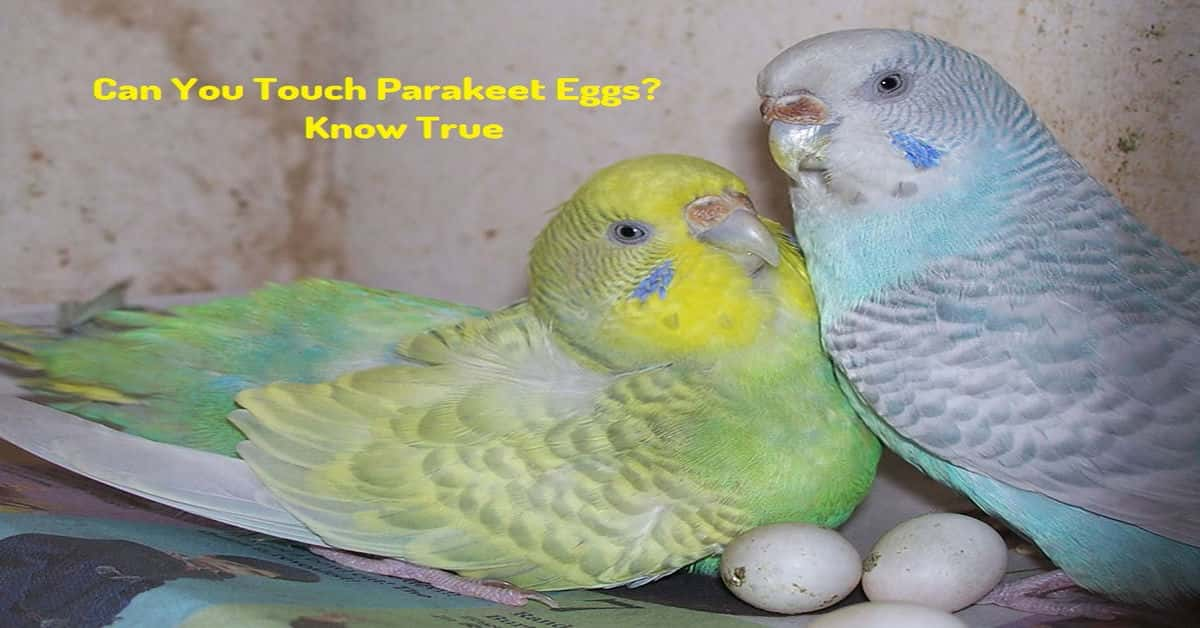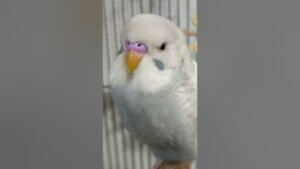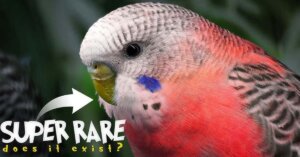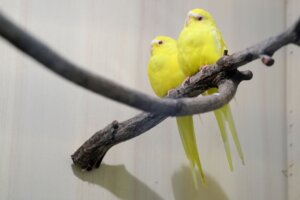Can You Touch Parakeet Eggs? Important Guidelines
You can touch parakeet eggs, but it’s best to avoid unnecessary handling. Excessive touching can stress the birds.
Parakeets are popular pets known for their vibrant colors and friendly nature. These small birds can lay eggs in captivity. Many bird owners wonder if they can touch the eggs without causing harm. While occasional, gentle handling is usually safe, frequent touching can cause stress for the parent birds.
Stress can lead to neglect or abandonment of the eggs. Always ensure your hands are clean to avoid transferring harmful bacteria. To ensure a healthy and successful hatching process, minimising interaction with the eggs is best. Providing a stable, quiet environment is crucial for the well-being of both the parakeets and their eggs.
Introduction To Parakeet Eggs
Parakeet eggs are small and delicate. Understanding these eggs helps you care for them better. This guide explains the basics and gives you tips on handling.
Basics Of Parakeet Reproduction
Parakeets lay eggs after mating. The female lays one egg every other day. A clutch usually has 4 to 6 eggs.
The eggs are white and oval, about 2 cm long, and incubate for 18 days.
Importance Of Egg Handling
Handling parakeet eggs requires care. Improper handling can harm the chicks inside.
Use clean hands or gloves. Keep the nest warm and safe. Limit handling to avoid stressing the female.
| Do’s | Don’ts |
|---|---|
| Use clean hands or gloves | Handle eggs frequently |
| Keep the nest warm | Expose eggs to cold air |
| Be gentle | Shake or drop the eggs |
- Check the eggs daily for cracks.
- Ensure the female has enough food and water.
- Avoid disturbing the nest too often.
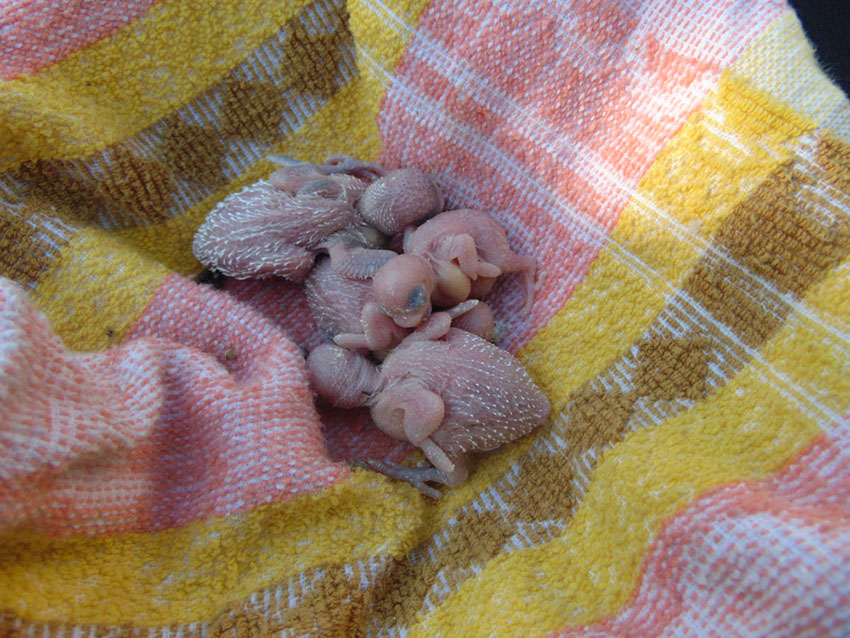
Physical Characteristics
Understanding the physical characteristics of parakeet eggs is important. It helps identify and handle them with care. Below, we explore the key aspects: size, shape, color, and texture.
1. Size And Shape
Parakeet eggs are generally small and oval-shaped. They measure about 2 to 3 centimetres in length. The width is around 1.5 centimetres. The eggs have a smooth and symmetrical structure. This size makes them delicate and easy to break. Being gentle is crucial when handling them.
2. Color And Texture
Parakeet eggs are typically white but may have a slight creamy tint. The shell is smooth to the touch and has a slight gloss, giving it a shiny appearance. The texture is firm but thin, making it fragile and prone to cracking. Always handle with clean and dry hands to avoid damage.
| Characteristic | Description |
|---|---|
| Size | 2-3 cm in length, 1.5 cm in width |
| Shape | Oval |
| Color | White or slight creamy tint |
| Texture | Smooth, slightly glossy |
Safety Precautions
Handling parakeet eggs requires extra care. These tiny eggs are delicate and can be easily damaged. Safety precautions are essential to protect the eggs and the parakeet’s health.
Washing Hands
Always wash your hands before touching parakeet eggs. Use warm water and soap to clean your hands thoroughly. This removes harmful bacteria and dirt. Dirty hands can transfer germs to the eggs, risking the health of the baby birds.
Follow these steps for effective hand washing:
- Wet your hands with clean, running water.
- Apply soap and lather well.
- Scrub your hands for at least 20 seconds.
- Rinse your hands under clean water.
- Dry your hands with a clean towel.
Using Gloves
Consider using gloves when handling parakeet eggs. Gloves provide an extra layer of protection. They help prevent the transfer of oils and dirt from your hands to the eggs.
For hygiene reasons, choose disposable gloves. Ensure they are clean and free from holes. Latex or nitrile gloves are ideal options.
Steps to use gloves properly:
- Wash your hands before putting on gloves.
- Wear a pair of clean, disposable gloves.
- Handle the eggs gently with gloved hands.
- Dispose of the gloves after use to avoid contamination.
Following these safety precautions helps ensure the well-being of parakeet eggs. Both washing hands and using gloves are simple yet effective methods. Protecting the eggs leads to healthy and happy baby parakeets.
When To Touch The Eggs
Touching parakeet eggs can be delicate. Knowing when and how to handle them is crucial. This guide will help you understand the right moments to touch parakeet eggs.
Let’s break it down into specific situations.
During Nest Inspections
Regular nest inspections are necessary to ensure the eggs’ safety. During these inspections, you might need to touch the eggs. Inspect the nest every few days to check for broken eggs or other issues.
When you inspect the nest, make sure your hands are clean. Gently pick up each egg and place it back after checking. This helps in maintaining a safe environment for the eggs.
In Case Of Emergencies
Emergencies might require you to touch the eggs. If an egg is in danger, you must act quickly. For example, if an egg falls out of the nest, you should place it back immediately.
During such situations, handle the eggs with care. Use a soft cloth to pick up the egg. Avoid using your bare hands if possible. This prevents transferring oils from your skin to the eggshell.
Another emergency could be if the nest gets damaged. You might need to move the eggs to a temporary nest. Ensure the new nest is warm and safe for the eggs.
In all cases, touching the eggs should be minimized. Only touch them when absolutely necessary. This increases the chances of the eggs hatching successfully.
| Situation | Action |
|---|---|
| Regular Inspections | Check eggs gently, place back carefully |
| Egg Falls Out | Use soft cloth, place back immediately |
| Damaged Nest | Move eggs to a temporary, warm nest |
Following these guidelines ensures the safety of your parakeet eggs. Proper handling is key to healthy hatching.
Potential Risks
Handling parakeet eggs can be tempting. But there are potential risks. These risks can affect the eggs’ health and future chicks.
Contamination
Touching parakeet eggs can cause contamination. Our hands carry bacteria and oils, which can transfer to the eggs. Bacteria can harm the developing chick, leading to infections or death.
To avoid contamination, wash your hands. If possible, wear gloves. Keep the nesting area clean. Avoid using strong chemicals near the nest.
Disturbing The Mother
Another risk is disturbing the mother. Parakeets are sensitive birds. They can get stressed easily. Touching the eggs can make the mother anxious. She might abandon the nest. This can result in the eggs not hatching.
Keep the nest in a quiet place. Minimize handling of the eggs. Ensure the mother feels safe and secure.
| Action | Potential Risk |
|---|---|
| Touching Eggs | Contamination |
| Handling Eggs | Disturbing the Mother |
Proper Handling Techniques
Handling parakeet eggs correctly is crucial. Proper handling ensures the eggs’ and future chicks’ safety and health. Below, we will cover some essential techniques for properly handling parakeet eggs.
Gentle Touch
Always handle parakeet eggs with a gentle touch. Their shells are fragile and can easily crack or break. Use the tips of your fingers to hold the egg. Avoid using your palms or squeezing too hard.
Before touching the eggs, ensure your hands are clean. Dirty hands can introduce harmful bacteria to the eggs. Wash your hands thoroughly with soap and water before handling them.
Minimal Movement
Limit the movement of the eggs as much as possible. Minimal movement helps prevent damage to the developing chick inside. If you need to move the eggs, do so carefully and slowly.
Place the eggs temporarily on a soft cloth or a padded surface. This reduces the risk of accidental drops or sudden jolts.
| Do’s | Don’ts |
|---|---|
| Handle with fingertips | Squeeze or press hard |
| Wash hands before touching | Touch with dirty hands |
| Move eggs slowly | Shake or jolt eggs |
- Use clean hands.
- Handle gently.
- Move eggs minimally.
Following these proper handling techniques helps ensure the safety of parakeet eggs. Handle them with care, and they will thrive.
Environmental Factors
Understanding the environmental factors influencing parakeet eggs is crucial. This helps ensure the eggs develop properly.
Let’s explore the key aspects of these factors.
Optimal Nest Conditions
The nest should be safe and comfortable for parakeet eggs. A clean nest is vital. Use soft materials like shredded paper or wood shavings. Keep the nest free from predators.
- Cleanliness: Regularly remove waste and old materials.
- Soft Materials: Use shredded paper or wood shavings.
- Safety: Ensure the nest is away from predators.
Temperature And Humidity
Proper temperature and humidity are essential for egg development. The nest should stay warm but not too hot. Aim for a temperature of around 37°C (98.6°F).
Humidity should also be monitored. The ideal range is between 50% and 70%. Use a hygrometer to measure humidity levels. Keep the environment consistent to avoid stressing the eggs.
| Factor | Optimal Range |
|---|---|
| Temperature | 37°C (98.6°F) |
| Humidity | 50% – 70% |
Maintaining these conditions helps ensure healthy parakeet chicks. Consistency is key for both temperature and humidity. Monitor these factors closely for the best results.
Post-handling Care
Handling parakeet eggs requires utmost care. Proper steps after touching them are vital to ensure the eggs’ health and safety.
Let’s explore the essential post-handling care steps.
Monitoring The Eggs
After handling, closely monitor the eggs. Check them several times a day. Look for any changes in color or texture. If an egg looks different, it may need special attention.
Keep a daily log of observations. This helps track any developments. Use a simple table for recording notes:
| Date | Time | Condition | Notes |
|---|---|---|---|
| 01/10/2023 | 10:00 AM | Normal | No changes observed |
| 02/10/2023 | 10:00 AM | Normal | No changes observed |
Checking For Damage
Ensure the eggs are free from damage. Gently inspect each egg for cracks. Cracks can harm the developing chick inside. Also, check for any spots or discoloration. These might indicate problems.
If you find a damaged egg, separate it. This prevents potential infections from spreading. Use a soft cloth to handle the eggs. This avoids further damage.
- Gently inspect each egg.
- Look for cracks or spots.
- Separate damaged eggs.
- Use a soft cloth for handling.
Regular checks are crucial. This ensures the eggs remain healthy. Proper care increases the chances of successful hatching.

Frequently Asked Questions
Is It Okay To Touch Parakeet Eggs?
Touching parakeet eggs is not advisable. Human scent may cause the mother to abandon them. Only handle if necessary.
Is It Ok To Touch A Bird Egg?
Touching a bird egg is not recommended. Human scent can deter the parent birds, and handling may harm the egg.
What Do I Do If My Parakeet Lays An Egg?
Provide a nesting box for your parakeet. Ensure a balanced diet with calcium supplements. Avoid touching the egg too much. Monitor her health closely. Consult a vet if needed.
How Long Does It Take Parakeet Eggs To Hatch?
Parakeet eggs take about 18 to 21 days to hatch. Ensure proper care and a suitable environment for successful hatching. Regularly check the nest and maintain optimal conditions.
Conclusion
Handling parakeet eggs requires care and knowledge. Always wash your hands before touching them. Minimize disturbance to ensure successful hatching. Observing proper techniques helps protect the eggs and the future chicks. Understanding your parakeet’s needs creates a healthier environment for breeding.
Follow these tips to support your parakeet’s breeding success.
Hello Dear, I'm Poli Kolymnia, owner of many birds (including budgies).
With a deep passion for these feathered companions, I'm here to share my expertise and extensive knowledge on birds care.
My articles cover essential topics like diet, housing, care, and health, providing practical tips to help you create a happy and thriving environment for your birds.
